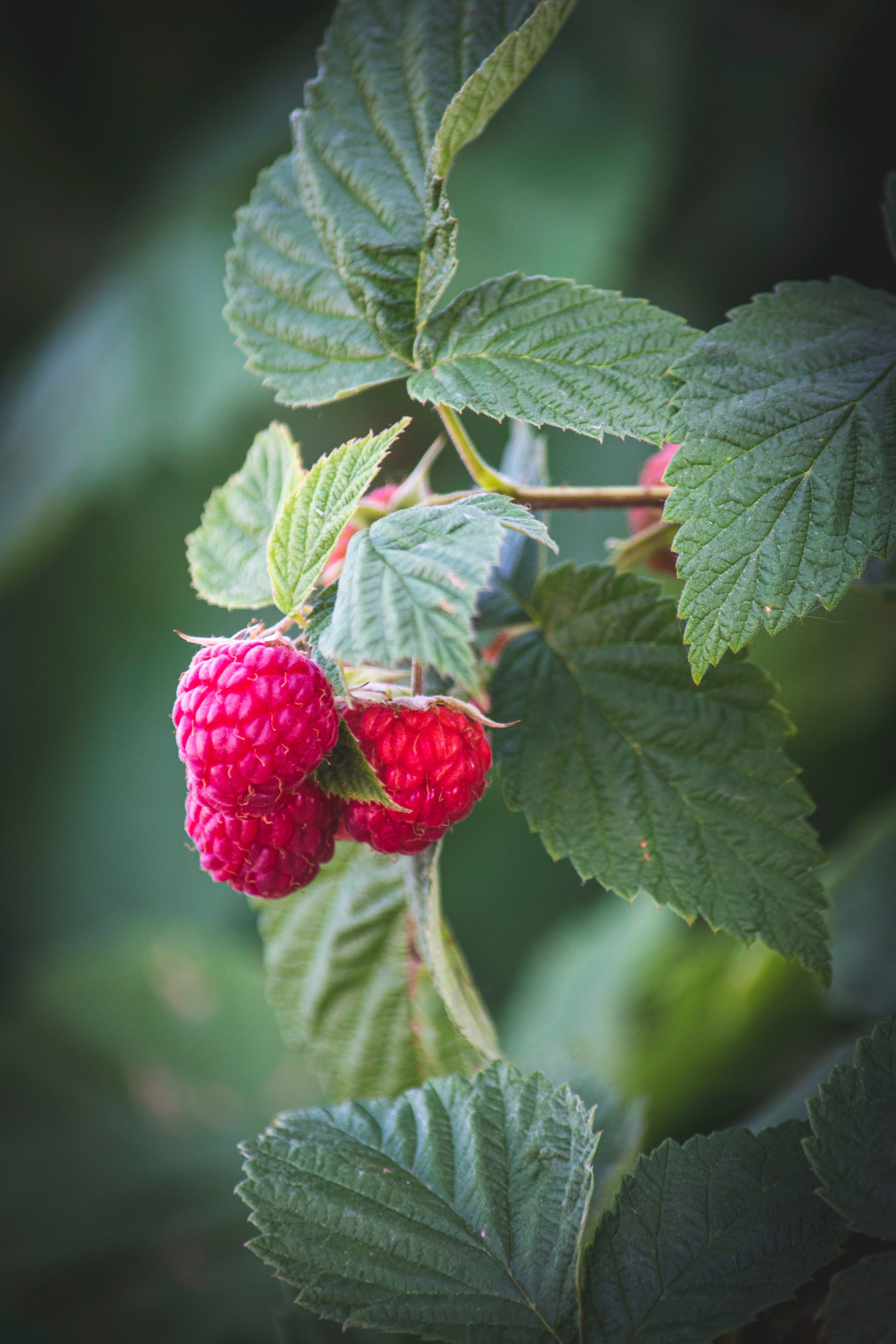Red Raspberry Leaf–Benefits and Usages
Raspberry (Rubus Idaeus)
The well-known herb, red raspberry leaf comes from the leaves of the common raspberry plant, rubus idaeus. It has been super prominent in my life recently, so I thought I would share my experiences and knowledge of this plant with you. From the ever-bearing plants hanging with abundant fruit that make delicious jams, cobblers, and smoothies to the tea leaf infusions to help regulate my body as it transitions into motherhood and prepares for labor, this plant never ceases to amaze me.
Red Raspberry leaf is an effective herbal medicine, especially for women. It is cultivated and grows wild in temperate climates throughout Europe and North America. This plant is very common and many of us know it for its delicious red berries, but the leaves also contain many powerful medicinal benefits, especially for the female reproductive system. This tonic herb is mild tasting and has been known to help balance hormones, deal with excess PMS symptoms, and improve the health of conception, pregnancy, and labor as it has a particular affinity to the uterus and female reproductive system. The fruit is well known as a tasty berry, flowering in early summer time and consumed fresh or processed into cordials, jams, or preserves. It is also very high in antioxidants. In folk medicine, raspberry flowers have been used for hemorrhoids and pimples. malaria, and a poultice for inflammatory conditions of the eye.
The Textbook of Natural Medicine states- “Used since the sixth century, the raspberry leaf plant is the best known and oldest of all the herb infusions and [is] included as a proved aid in maternity in the most ancient of herbal books”.
Benefits of Raspberry Leaf Tea
Family: Rosaceae
Part of plant used: Leaves and Fruit
Constituents: Flavonoids (mainly glycosides kaempferol/ quercetin), tannins, fruit sugar, pectin, citric acid, malic acid
Women Health
Used during pregnancy to strengthen and tone the tissue of the womb, assists/ strengthens contractions checks hemorrhage during labor, and helps stop excessive leucorrhoea. It is known as a uterine tonic, with a strengthening, toning, and nourishing effect on the tissue/ function of female reproductive organs. Helps to reduce pain from contractions during labor. Helps ease childbirth, improve milk production, and speed recovery postpartum.
Oral Support
Helps with issues of the mouth such as mouth ulcers, bleeding gums, inflammations, and sore throats
Nutritional Aid
Rich in iron and calcium, potassium, vitamins A, C, and E, and antioxidants. Anti-inflammatory due to the high amounts of ellagic acid.
Digestive Support
Ease bloating due to water retention due to being a diuretic. Helps to ease mild nausea and diarrhea
Tonifying
Tones mucus membranes throughout the body, soothes the urinary tract and kidneys,
Interactions/Safety
There are not many known interactions with other herbs/ dietary supplements but there are a few things to take into account.
“Raspberry roots and leaves may be a mild diuretic, and increase the flow of urine. Patients taking herbs and supplements that increase the flow of urine should use raspberry with caution. Raspberry may also have laxative properties, and care should be taken with other herbs and supplements with these effects, such as psyllium.”
Certain extracts of raspberry leaves may relax muscles. Use caution when taking other herbs/ supplements that may have sedative, relaxing, or antispasmotic effects.
No drug interactions have been researched and reported.
No side effects known- please consult a well-versed healthcare practitioner if you want to take his herb while pregnant.
Contraindications
Use of red raspberry leaf in complicated pregnancies (e.g. Hypertension )
History of c-section/ undergoing planned cesarean for medical reasons.
Women undergoing induction of labor.
Women with a history of miscarriage/ premature labor.
Women having vaginal bleeding during 3rd trimester.
Women with a history of endometriosis, fibroids, breast or ovarian cancer.
Dosage
As with the dosage of all herbs- dosing varies according to constitution, weight, and age.
Infusion- use boiling water onto dried herb, let sit 10-15 minutes; one cup over 2tsp. drink freely
Tincture- 2-4 ml three times a day (1:5) in 40%)
*Disclaimer- *These statements/products are not intended to treat, diagnose, cure, or prevent any disease, please check in with a well-versed healthcare practitioner to see if these herbal choices are right for you. Substances mentioned above may be associated with mild side effects depending upon your constitution, so like with any herbs use with caution and make responsible choices. First and foremost listen to your body and your doctor or midwife.
Sources
Pizzorno JE, Murray MT. Textbook of Natural Medicine. St. Louis, MO: Elsevier/Churchill Livingstone; 2013.
Hoffman, David. Medical Herbalism, The Science and Practice of Herbal Medicine. Healing Arts Press, Vermont. 2003.
https://americanpregnancy.org/pregnancy-health/herbal-tea/
www.naturalstandards.com



















Product Review of Dose for your Liver, a tasty herbal elixir.